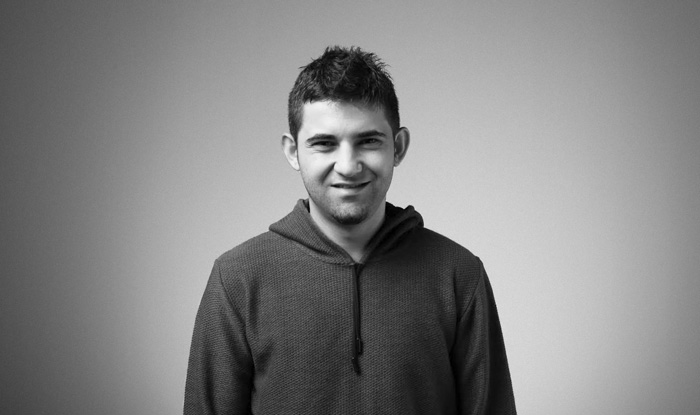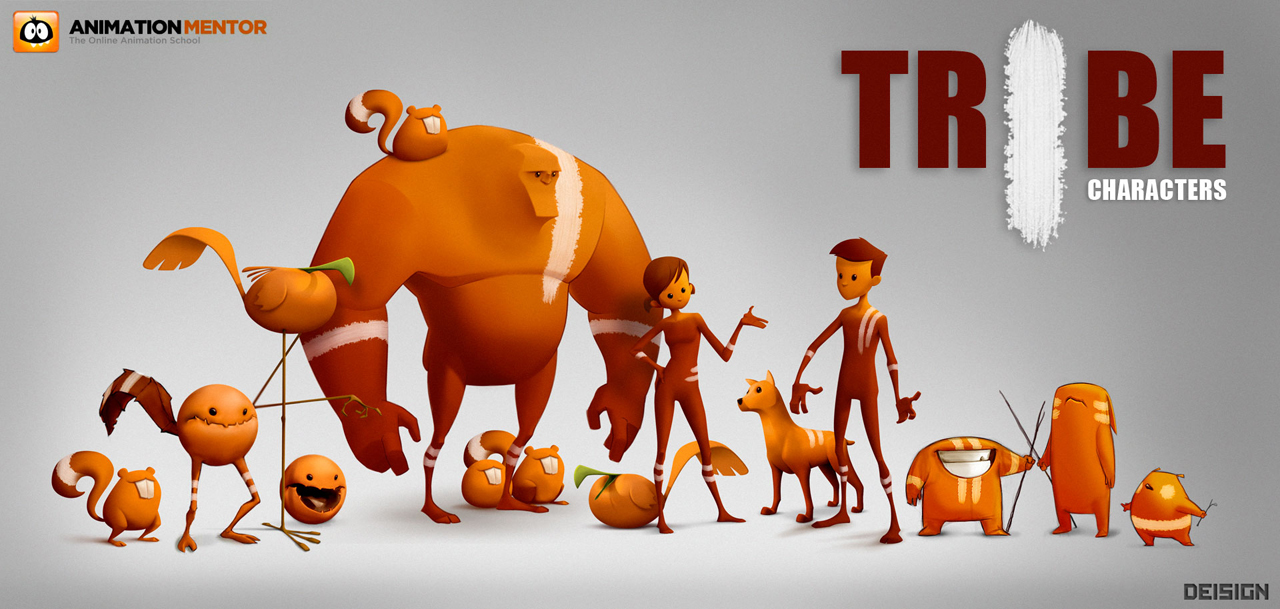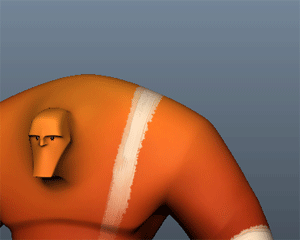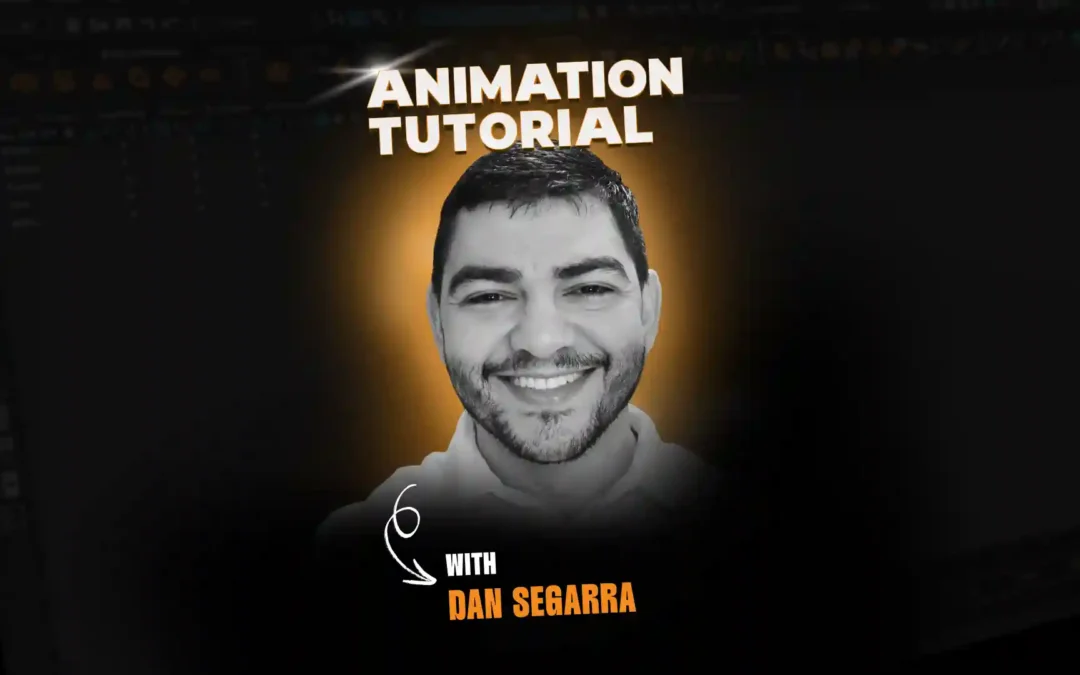
Today, we’re honored to have a blog post from our kick-ass Tribes rigger, Ozgur Aydogdu. Ozgur is swinging by the blog today (all the way from Turkey!) to give us his tips on how he approaches rigging new characters, what he likes most and least about the rigging process, and to show us some awesome student work using the Animation Mentor Tribes rigs.
Learn more about our rigs, and download our Free Stewart and Squirrels rigs today.
– The Animation Mentor Crew
—
Can you discuss your background and how you got into rigging?
I received my Bachelor’s degree in computer engineering and did a masters on software engineering afterwards. So, I can say that I have a solid technical background. However, I was growing up in a family where I was very much exposed to various art disciplines -mostly due to my father being a painter- since my childhood. Ever since, I remember myself drawing sketches on my notebook and trying basic scripts with my first computer, Commodore 64. Then I met 3D with early version of 3D Studio and started modeling anything around. Throughout my university years, I worked on various 3D freelance projects and upon graduation I started to work in a company developing simulation software. But soon enough, I realized it was not really for me, and started to build a portfolio out of some personal modeling and rigging projects. With that, I applied to a post production company in Istanbul/Turkey and started working as a 3D Generalist where I mostly did character rigging and animation.
Having worked as a generalist for like 6 years, I took part in many projects where I carried out each step by myself starting from design, model, texture to rig and animation which really contributed to my skills. Still, I believe in the necessity and benefit of specialization as it is also the way of work in the industry. So, I started working on some personal rigging projects one of which, “Cenk” became a hit online and eventually, I found myself to get into more and more into rigging where I would combine my technical and artistic skills in best way. At the moment, I’m working as a Lead Character Rigger at Anima Istanbul, Turkey where we’re working on the studio’s first animated feature, Bad Cat Serafettin. Apart from all these, I need to admit that I enjoy the anatomy, geometry and problem solving which are the all essence of rigging.
“Cenk” Character Reel from Ozgur Aydogdu on Vimeo.
What is the most challenging part of rigging? What is the most fun part of rigging?
The most challenging part is to find a balance between the level of flexibility and simplicity. The rig should be flexible enough so that the animators would not feel limited and be able to try various poses even the ones that they did not imagine at first. So, it should be detailed and have various controls. However, the rig should be simple enough so that it shouldn’t take a lot of time for an animator to achieve a pose after digging into various controllers. In fact, adding too many controllers may freak the animators out, and it can even become cumbersome to animate. So, there needs to be a balance.
Another thing is the character-based rigging challenges. We are dealing with new character designs all the time and every new design comes with its own unique set of requirements. No matter how experienced you are, these can be very challenging, yet fun at the same time. Actually these are what keeps us going, everyday is a new challenge and solving these puzzles is our job. That’s why, as technical directors, we are sometimes referred to as “problem solvers”.
To participate in a collaborative, creative process and working with other artists to make a visual story come to life is already very rewarding but obviously the most fun part of rigging is watching the fantastic animations made with that rig. I really enjoy watching animations where animators have used the features I have added and tell different stories. It is amazing when an animator tries a pose that even I had not imagined while adding that feature. Regarding Tribes, it’s even more great to rig characters for a highly prestigious character animation school. Unlike feature film, short film or commercial characters, these characters don’t “die” when the project ends. They are always alive and keep me surprising with brand new super cool animations every new day.
If someone was to start the process of rigging a new character – what are the steps you recommend they take first?
The very first thing that the rigger should do is to make sure that the model meets the rigging requirements. Having too many or insufficient spans around highly deforming areas, polygon flow being not in line with the muscles or any issues about the model may end up with unwanted deformations. It is best if the rigger guides the modeler during the modeling phase.
Every character has a unique body language and a set of expressions. Most of the time, expression sheets and concept drawings help us finding these out but also reading the screenplay, knowing about character backgrounds, thinking what they will do in the show gives you clues about the way they should move. My advice would be to rig not only for the sake of rigging, but for doing it considering that the character will actually live and express feelings and emotions through animation. While working, keeping that in mind connects you with the character. As a result, rather than just going through a “to-do” list, you take a role at developing the character’s personality.
What skills make for an excellent rigger? Or how would you recommend someone learn rigging?
Most of the time, rigging is considered as a technical job, but I think drawing and especially having an artistic eye is very important. Along with strong problem solving abilities, a solid understanding of anatomy, form and volume is the key.
Technically, it is very important to know how to use your tools in a best way. In our case it is the software we use for rigging. We need to build complex setups and solve problems along the way, which we can do only by having a good knowledge on the software. Also automating the repeating tasks has a tremendous effect on speeding up the rigging process. It keeps your rigs consistent and error-free, also lets you spend more time on the fun tasks, trying creative solutions and polishing deformations. At this point, scripting in MEL and Python is a huge plus for any rigger out there.
Watching tutorials, carrying out some individual projects and keeping on trying would extremely help learning. For instance, on Cenk, my personal project, I carried out a real project with a timeline and tried different things. I tried various new techniques and experienced a lot more than I imagined throughout the project. I can tell that, personal projects would always be key to developing as you set your own limits, it is a very good method of self development and on the job learning.
Apart from all these, it’s still very difficult to make a difference and get noticed. In reels, rather than standard Foot Rolls and blending IK/FKs, personally I’m eager to see smart rigging solutions to different problems, with interesting character designs and appealing characters. That’s what it is all about. Even though the most important thing is the quality of your work itself, a little bit of choreography could make a big difference, making your reel fun to watch and helping it stand out.
Last but not the least, is that you should really enjoy what you’re doing. It takes a lot of work and real passion to achieve in this field. One should be eager and passionate enough to make a difference. This could only happen if you really love it, I guess.
When rigging the Tribes characters, did you collaborate with the other artists involved? If so, can you discuss?
For me, one of the most rewarding parts of this project was collaborating with some amazing artists in the industry.
It all started with the extremely stylized, super cool character designs by Deisign. His fantastic concept drawings helped us a lot throughout the project. I knew it was going to be a difficult task to reflect all these remarkable design elements and strong silhouettes when we switch to CG but Ander Lizarralde and the team at animationrigs.com did an amazing job modeling Tribe Characters. It was a real joy to work with such clean geometry.

I could never imagine that we’d come such a long way together, when we had first met with Bobby Beck, CEO and co-founder of Animation Mentor. It’s very easy to get lost in details when working on such a big project but from the very first moment, he knew what he wanted for the Tribes Characters and it was his vision to constantly raise the bar in order to make top quality rigs for the students.
The whole journey has been a great experience for me and I feel very lucky to have met these artists. I really hope that our paths cross again.
Students and alumni who use the Tribes Characters say they are truly incredible to work with. You rigged them in a way that made the animators lives much easier. Can you share 2-3 tips on how you rigged the Tribes?
Thanks to continuous feedback from Bobby and the rig tester, I think we found a good balance between number of controls, simplicity and quality at the same time.
The spine setup I developed for Tribes was something I had in mind for a while. I was planning to combine all the features that I used on different spine setups and merge them into a single, powerful setup. It took a while to get to the point we wanted, but the result was well worth the effort. We finally had a fully automated non-flipping spine setup, which supports both IK and FK at the same time, having inverse pelvis rotation (what we also call “Samba Dance controller”), plus curvature and free spine controls, giving us complex behavior using simple controllers. I can say that it’s the core of all Tribe Characters. I used that not only for the spines of bipedal characters but also for the whole bodies of Monster Ball, Squirrels and Bird Ball, in other words wherever I needed volume preserving squash stretch with extra controls, this spine setup came in handy.
One of the challenging design elements that contradicted with traditional ways of rigging was that the Imp character “Rock” did not have a “head” by nature, however he had a mouth placed on his torso. With all the clavicle and spine joints in action, torso is such a highly deforming area that it’d cause lots of artifacts when combined with the mouth setup, especially with extreme poses. I overcame the issue by using giant lattices that mimic the spine movement which deforms the front torso, and masked the influence area so that we still get the same joint based setup work as normally for the back, arms and legs.
Rock, Boomerang catch from Brandon Beckstead on Vimeo.
Another challenging task was getting Stan’s upper body, especially shoulders and upper arm deformations right. Being a super muscle guy, he needs more than the traditional skinning methods. I had to find a way to maintain his muscle volume, without using any external plugins or muscle deformers. In the end, I developed my own Pose Reader system, using native Maya nodes. It is based on a bunch of distance nodes, they find out the pose of the arms at a time and decide which corrective shape should jump in, fix the geometry and make him look nice. It took a while to develop the system and sculpt the shapes but in the end we had a volume maintaining system which operates on every Maya out there and works almost real time. I used a simplified version of this system on the other characters as well.

As for the workflow, I usually prefer to start with the body setup. Once I’m done with the body rig, animators can start testing or even start animating their shots, focusing only on body mechanics. Meanwhile I keep working on the facial setup. This saves some valuable time especially on tight deadlines.
Finally, among the 10 Tribe Characters, which one is your favorite and why?
Even though I fell in love with every one of Tribe Characters when I first saw Dei’s amazing concept drawings, I feel like the muscle guy, Stan is my favorite among all. The contrast between his upper body and lower body, his facial features and strong silhouette, combined with the beautiful stylization of Tribe Characters in general, makes him a very unique and remarkable character for me. I’m always keeping an eye on the animations that use Stan as the main character and Animation Mentor students have produced some amazing performances so far.
David Friedenstein – Animation Reel – winter 2014 from David Friedenstein on Vimeo.
Another character that I think has a lot of potential is Squirrels. Having no legs and arms, one can think that the choices are limited but quite the contrary, we pushed the rig so much that he’s much more than a flour sack now. With all the squash stretch, mouth and teeth controls, this little guy keeps a lot of energy in his body and has a lot to express. The good thing is that, Animator Mentor is providing Squirrels rig to the CG community, along with Stewart rig. I’m really curious and looking forward to see what animators all around the world will come up with Squirrels and Stewart!
AM Class 04 – Pizza Delivery from Sérgio Dias on Vimeo.
Squirrel WIP from James King on Vimeo.
—
Download your very own version of Stewart and Squirrels here: https://www.animationmentor.com/free-maya-rig/
Learn more about Ozgur: http://www.ozguraydogdu.com/
NEW! Sign up on the the right sidebar under “Subscribe to Animation Mentor” to receive the latest Animation Mentor blog posts via email.



